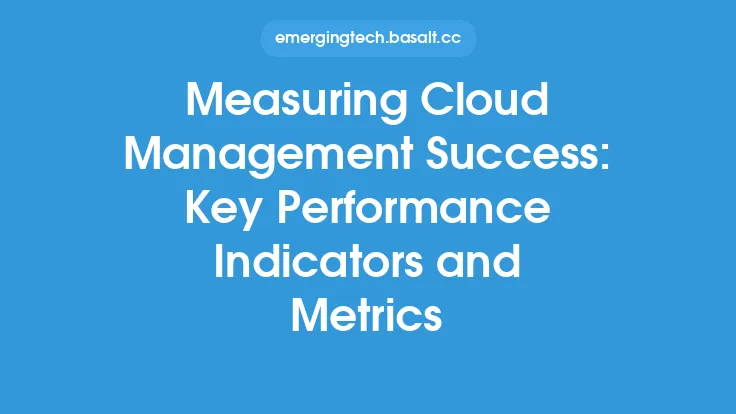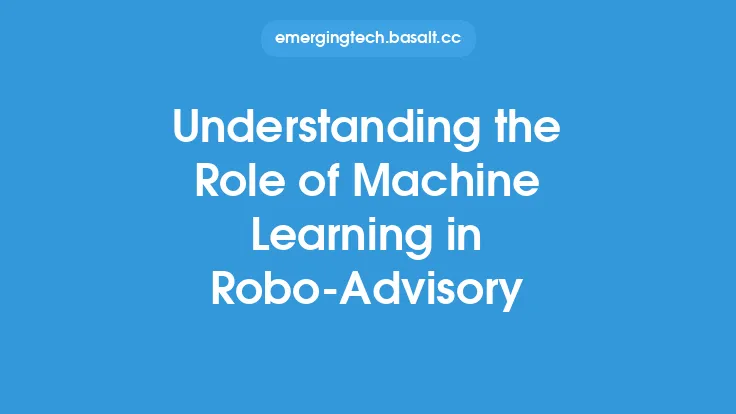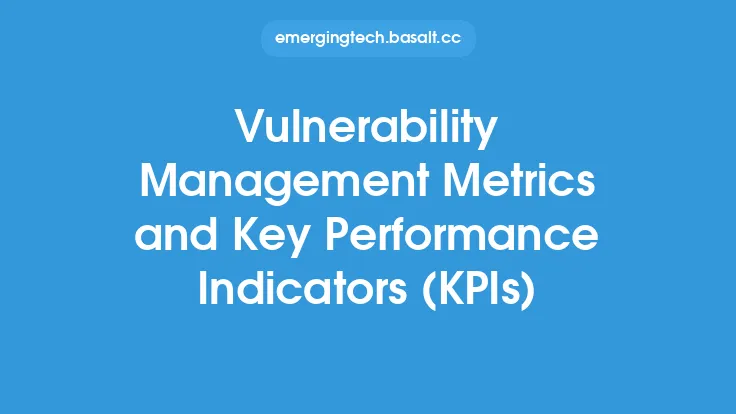The rise of robo-advisors has transformed the investment landscape, offering a low-cost, efficient, and accessible way for individuals to manage their portfolios. As the popularity of robo-advisors continues to grow, it's essential to evaluate their performance using key metrics and benchmarks. This article will delve into the world of robo-advisory, exploring the critical performance indicators that investors should consider when assessing the effectiveness of these automated investment platforms.
Introduction to Robo-Advisor Performance Metrics
Evaluating the performance of robo-advisors requires a comprehensive understanding of the key metrics that drive their success. These metrics can be broadly categorized into three groups: investment performance, risk management, and operational efficiency. Investment performance metrics assess the robo-advisor's ability to generate returns, while risk management metrics evaluate its capacity to mitigate potential losses. Operational efficiency metrics, on the other hand, examine the platform's ability to execute trades, manage portfolios, and provide customer support.
Investment Performance Metrics
Investment performance is a critical aspect of robo-advisor evaluation. The following metrics are commonly used to assess a robo-advisor's investment performance:
- Return on Investment (ROI): This metric measures the returns generated by the robo-advisor's investment portfolio, typically expressed as a percentage.
- Sharpe Ratio: This ratio calculates the excess return of an investment over the risk-free rate, relative to its volatility. A higher Sharpe ratio indicates better risk-adjusted performance.
- Information Ratio: This metric measures the excess return of an investment relative to a benchmark, divided by the tracking error. A higher information ratio indicates better performance relative to the benchmark.
- Sortino Ratio: This ratio calculates the excess return of an investment over the risk-free rate, relative to its downside volatility. A higher Sortino ratio indicates better risk-adjusted performance, with a focus on minimizing losses.
Risk Management Metrics
Risk management is a vital component of robo-advisor evaluation, as it helps investors understand the potential downsides of an investment. The following metrics are commonly used to assess a robo-advisor's risk management capabilities:
- Value-at-Risk (VaR): This metric estimates the potential loss of an investment over a specific time horizon, with a given probability.
- Conditional Value-at-Risk (CVaR): This metric estimates the expected loss of an investment over a specific time horizon, with a given probability.
- Maximum Drawdown: This metric measures the maximum peak-to-trough decline in an investment's value over a specific time horizon.
- Standard Deviation: This metric measures the volatility of an investment's returns, with higher values indicating greater uncertainty.
Operational Efficiency Metrics
Operational efficiency is essential for robo-advisors, as it directly impacts the investor experience and the platform's overall effectiveness. The following metrics are commonly used to assess a robo-advisor's operational efficiency:
- Trade Execution Speed: This metric measures the time it takes for the robo-advisor to execute trades, with faster execution times indicating better performance.
- Portfolio Rebalancing Frequency: This metric measures how often the robo-advisor rebalances the investment portfolio, with more frequent rebalancing indicating better risk management.
- Customer Support Response Time: This metric measures the time it takes for the robo-advisor's customer support team to respond to investor inquiries, with faster response times indicating better service.
- Platform Uptime: This metric measures the percentage of time the robo-advisor's platform is available and functioning correctly, with higher values indicating better reliability.
Benchmarking Robo-Advisors
Benchmarking is a critical step in evaluating the performance of robo-advisors. By comparing a robo-advisor's performance to a relevant benchmark, investors can gain a better understanding of its strengths and weaknesses. Common benchmarks used for robo-advisors include:
- Market Indices: Such as the S&P 500 or the Dow Jones Industrial Average, which provide a broad measure of market performance.
- Peer Group Averages: Which compare the robo-advisor's performance to that of its peers, providing a more nuanced understanding of its relative strengths and weaknesses.
- Risk-Adjusted Benchmarks: Such as the risk-free rate or a benchmark with a similar risk profile, which help investors evaluate the robo-advisor's risk-adjusted performance.
Conclusion
Evaluating the performance of robo-advisors requires a comprehensive understanding of the key metrics and benchmarks that drive their success. By examining investment performance, risk management, and operational efficiency metrics, investors can gain a deeper understanding of a robo-advisor's strengths and weaknesses. Benchmarking is also essential, as it provides a framework for comparing a robo-advisor's performance to relevant market indices, peer group averages, or risk-adjusted benchmarks. As the robo-advisory landscape continues to evolve, it's essential for investors to stay informed and adapt their evaluation frameworks to ensure they're making the most of these innovative investment platforms.





